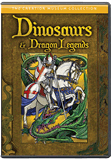
Rodent-Like Mammals Beat out Dinosaurs by Munching on Flowers
Rodent-like mammals with bumpy back teeth beat out dino competitors by munching on flowers.
News Source
- Tooth topography: “Creature bested dinos with top chompers”
An extinct group of mammalian multituberculates is believed by evolutionists to have prospered despite having to share their world with dinosaurs and to have survived the dinosaur mass extinction event. “How?” many have wondered. Evolutionary biologists, publishing their findings in Nature, suggest the evolving complexity of the multituberculate teeth allowed the critters to diversify their diet to include evolving flowers. Such flower power enabled the furry opportunists to survive whatever (the big meteor, according to the usual scenario) killed off the dinosaurs at the end of the Cretaceous period, about 66 million years ago by evolutionary reckoning.
Using software for topographical mapping of land, the team analyzed teeth from multituberculate fossils around the world. Multituberculates have molars characterized by several rows of bumpy cusps. The team correlated the complexity of molar surfaces with body size and the strata where fossils were found. Multituberculates have been found in Cretaceous and Paleocene layers, ranging from 165 to 34 million years ago by conventional dating. Evolutionists date flowering plants to the mid-Cretaceous, about 90 million years ago.
For millions of years, mammals were unable to develop much due to competition from the dinosaurs.
“For millions of years, mammals were unable to develop much due to competition from the dinosaurs,” explains co-author Alistair Evans. “This study shows how multituberculates bucked this trend—they increased from the size of a mouse to the size of a beaver and were able to take on new roles in the ecosystem. … They did this prior to the extinction event which killed off the large dinosaurs—generally considered a turning point in mammalian evolution. Compared to other mammals of the time, they were really ahead of the game. They also did rather well out of that extinction event, in fact increasing in size and tooth complexity immediately after it.”
“These mammals were able to radiate [fill ecological niches] in terms of numbers of species, body size and shapes of their teeth, which influenced what they ate,” adds lead author Gregory Wilson. “If you look at the complexity of teeth, it will tell you information about the diet.” Considering the strata where fossils were found, Evans observes, “Multituberculates seem to be developing more cusps on their back teeth, and the bladelike tooth at the front [a typical rodent feature] is becoming less important as they develop these bumps to break down plant material. At the height of multituberculate evolution, these animals had teeth as complex as many modern plant-eating mammals—an attribute that certainly contributed to their evolutionary success.”
This evolutionary story looks impressive because it appears to correlate edible flowers, body size, bumpy teeth, and the big bad meteor generally acknowledged by many evolutionists with mass extinction of dinosaurs. But that interpretation is wholly dependent on implicit acceptance of unproven concepts such as the idea that all things living evolved from simpler forms over millions of years. The radiometric dating methods by which the extreme age of the earth is justified are themselves based on a number of unverifiable uniformitarian assumptions, including the non-occurrence of a global Flood. Biological transformation of one kind of organism into another has also not been demonstrated either in living things or in their fossilized remains.
The fossil facts ferreted out by this group of investigators are consistent with creationist models of Flood geology. Much of the geologic column is a timeline of the year of the global Flood and records the order in which plants and animals were buried. It is reasonable to assume plants and animals in the pre-Flood world dominated habitats most suitable for them. The geologic column can give us some clues about that pre-Flood world. Amidst the upheavals associated with the weeks during which floodwaters surged upward and buried billions of living things, those things in habitats first to be overwhelmed would generally occupy lower positions in the geologic column. Thus the fact that dinosaurs appear in the Jurassic and Cretaceous layers of rock with a number of other animals does not mean that those animals evolved at the same time but rather that they likely lived in habitats overwhelmed at about the same time. Creatures fossilized higher up in the rock layers were likely either able to temporarily flee rising waters or occupied habitats overwhelmed later—perhaps due to higher elevations farther inland. The association of mostly gymnosperm plants with dinosaur fossils suggests dinosaurs shared their most common habitats with more gymnosperms than flowering plants. Floral environments were likely overwhelmed later, as angiosperm fossils appear higher. Similarly, finding multituberculates in layers where dinosaurs appear says something about the location of their habitats relative to the rising waters—possibly sharing lowland habitats with dinosaurs—rather than saying anything about when those animals came into existence.
Without any extant multituberculates to observe or any fossilized multituberculates containing recent lunches, we cannot be sure what they ate at the time of the Flood. We can be sure however that all animals were vegetarian in the beginning (based on Genesis 1:29-30) and did not have to evolve the ability to munch flowers.
Further Reading
- Doesn’t the Order of Fossils in the Rock Record Favor Long Ages?
- Aren’t Millions of Years Required for Geological Processes?
- Sinking a Floating Forest
- Order in the Fossil Record
- Sinking a Floating Forest
For More Information: Get Answers
Remember, if you see a news story that might merit some attention, let us know about it! (Note: if the story originates from the Associated Press, FOX News, MSNBC, the New York Times, or another major national media outlet, we will most likely have already heard about it.) And thanks to all of our readers who have submitted great news tips to us. If you didn’t catch all the latest News to Know, why not take a look to see what you’ve missed?
(Please note that links will take you directly to the source. Answers in Genesis is not responsible for content on the websites to which we refer. For more information, please see our Privacy Policy.)
Recommended Resources

Answers in Genesis is an apologetics ministry, dedicated to helping Christians defend their faith and proclaim the good news of Jesus Christ.
- Customer Service 800.778.3390
- © 2024 Answers in Genesis





